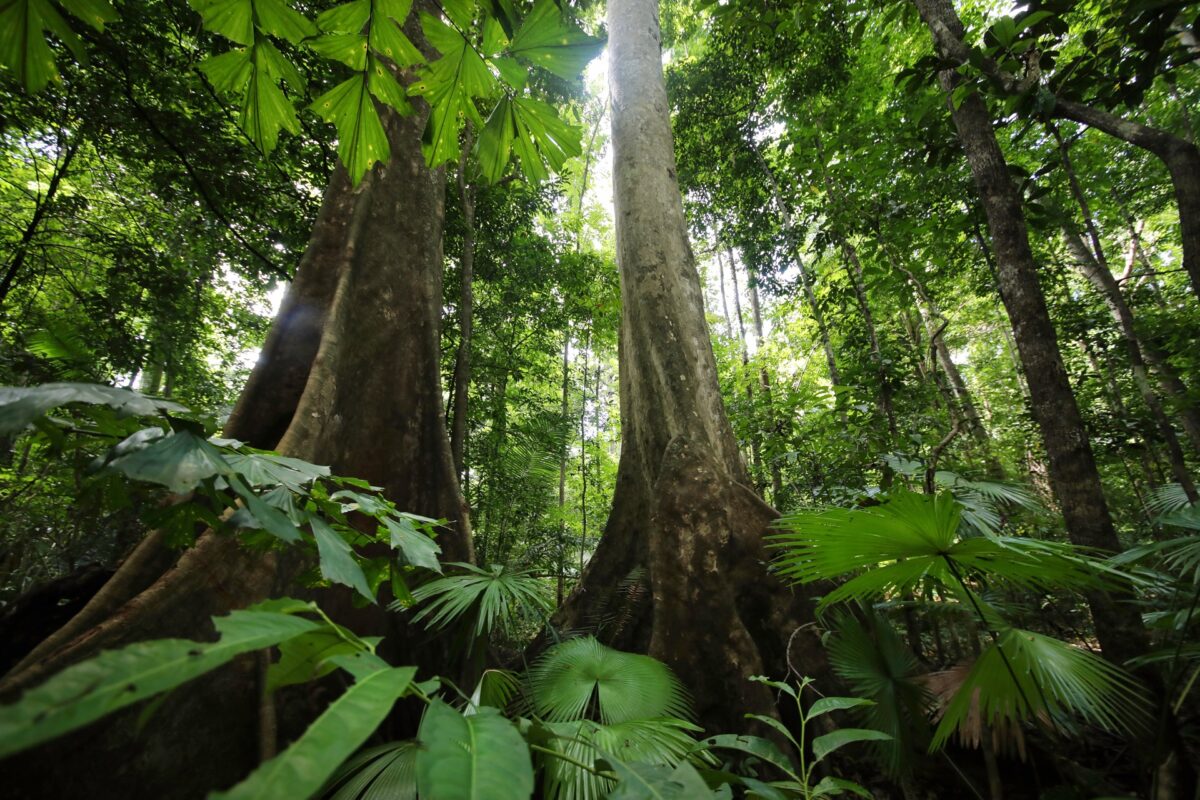KISMA partners with goats to remove invasive plants from Calumet’s Swedetown Trails – Upper Michigan’s Source

Report on an Ecological Restoration Initiative in Calumet, Michigan, and its Alignment with Sustainable Development Goals
Executive Summary
An initiative led by the Keweenaw Invasive Species Management Area (KISMA) in Calumet, Michigan, utilizes goat grazing to manage invasive plant species. This project serves as a practical application of nature-based solutions to address ecological degradation, directly contributing to the United Nations Sustainable Development Goals (SDGs), particularly SDG 15 (Life on Land). This report analyzes the project’s methodology and its significant alignment with multiple global sustainability targets.
Project Overview
- Location: Swedetown Trails, Calumet, Michigan.
- Managing Body: Keweenaw Invasive Species Management Area (KISMA).
- Ecological Challenge: The proliferation of glossy buckthorn, an invasive woody shrub. This species forms dense thickets, outcompeting native flora and disrupting the local ecosystem by negatively impacting insect populations, bird populations, and overall forest regeneration.
- Intervention Strategy: The deployment of goats from Regenerative Ruminants to consume the invasive buckthorn. This biological control method is being monitored by KISMA to assess its long-term effectiveness.
Primary Contribution to Sustainable Development Goal 15: Life on Land
The project is a direct effort to protect, restore, and promote the sustainable use of terrestrial ecosystems. It specifically addresses the following SDG 15 targets:
- Target 15.8: Control Invasive Alien Species. The core objective of the initiative is to control and reduce the impact of an invasive alien species (glossy buckthorn) on a local land ecosystem. The use of goats is an innovative measure to eradicate a priority invasive species that threatens forest health.
- Target 15.5: Halt Biodiversity Loss. According to KISMA, glossy buckthorn does not serve as a food source for native insects, causing a ripple effect of degradation throughout the ecosystem. By removing this plant, the project aims to restore the natural habitat, allowing native species to thrive and thereby halting the loss of local biodiversity.
- Target 15.2: Promote Sustainable Forest Management. The unchecked growth of buckthorn hinders natural forest regeneration. This initiative supports the restoration of a degraded forest area, promoting its long-term health and sustainable management.
Alignment with Additional Sustainable Development Goals
The project’s impact extends beyond ecosystem restoration, contributing to other key SDGs:
- SDG 11: Sustainable Cities and Communities. By restoring the ecological health of the Swedetown Trails, a public green space, the initiative strengthens efforts to protect local natural heritage (Target 11.4) and ensures the area remains a valuable asset for the community.
- SDG 12: Responsible Consumption and Production. The use of goat grazing represents a sustainable land management practice. It is a natural alternative to mechanical or chemical removal methods, promoting the efficient use of natural resources (Target 12.2) and reducing reliance on potentially harmful interventions.
- SDG 17: Partnerships for the Goals. The project is a successful collaboration between a local management organization (KISMA) and a private enterprise (Regenerative Ruminants). This public-private partnership (Target 17.17) is a model for mobilizing resources and expertise to achieve sustainability objectives.
Conclusion
The KISMA goat grazing initiative in Calumet is a powerful example of local action contributing to global goals. By employing a sustainable, nature-based solution, the project effectively addresses the critical challenge of invasive species, directly advancing SDG 15. Furthermore, its positive impacts on community spaces, sustainable practices, and collaborative partnerships demonstrate a holistic approach to sustainability, proving that localized environmental stewardship is fundamental to achieving the broader 2030 Agenda for Sustainable Development.
SDGs Addressed in the Article
SDG 15: Life on Land
- The article directly addresses SDG 15, which aims to “protect, restore and promote sustainable use of terrestrial ecosystems, sustainably manage forests, combat desertification, and halt and reverse land degradation and halt biodiversity loss.” The core topic is the management of an invasive plant species (glossy buckthorn) to protect a forest ecosystem (Swedetown Trails). The article highlights how this invasive species disrupts the local environment by outcompeting native plants and negatively affecting wildlife, which is a direct threat to terrestrial life and biodiversity.
Specific Targets Identified
-
Target 15.8: By 2020, introduce measures to prevent the introduction and significantly reduce the impact of invasive alien species on land and water ecosystems and control or eradicate the priority species.
- The article describes a specific measure—using goats for grazing—to control a priority invasive species, the “glossy buckthorn.” The initiative by the Keweenaw Invasive Species Management Area (KISMA) is a direct action to “significantly reduce the impact” of this species on the local forest ecosystem.
-
Target 15.5: Take urgent and significant action to reduce the degradation of natural habitats, halt the loss of biodiversity and, by 2020, protect and prevent the extinction of threatened species.
- The article explains that glossy buckthorn “forms dense thickets in the forest” and “outcompetes native species.” This degradation of the natural habitat leads to a loss of biodiversity, as stated by August Camp: “It has these ripple effects throughout the ecosystem where it starts to impact insect populations, and bird populations.” The project to remove the buckthorn is an urgent action to halt this process.
-
Target 15.2: By 2020, promote the implementation of sustainable management of all types of forests, halt deforestation, restore degraded forests and substantially increase afforestation and reforestation globally.
- The effort to remove an invasive species that harms “forest regeneration as a whole” is a form of restoring a degraded forest. By controlling the buckthorn, KISMA is promoting the sustainable management of the Swedetown Trails forest, allowing native species to thrive and the forest to regenerate naturally.
Indicators Mentioned or Implied
-
Area of land managed
- The article provides a direct, quantifiable indicator of progress: “The goats eat an acre or two every day.” This measures the area of the ecosystem being actively managed to control the invasive species.
-
Reduction in invasive species
- An indicator is implied when the article states that “KISMA is tracking the effects of goat grazing on buckthorn.” This suggests that data is being collected to measure the reduction in the population or density of the glossy buckthorn as a result of the intervention.
-
Biodiversity health
- The article implies that the health of local biodiversity is an indicator of success. It notes the negative impacts on “insect populations, and bird populations” and the fact that “no native insects that use buckthorn as a food source.” An improvement in the populations of these native species following the removal of the buckthorn would serve as an indicator of ecosystem restoration and progress towards halting biodiversity loss.
SDGs, Targets, and Indicators Analysis
| SDGs | Targets | Indicators |
|---|---|---|
| SDG 15: Life on Land | 15.8: Introduce measures to prevent the introduction and significantly reduce the impact of invasive alien species on land and water ecosystems and control or eradicate the priority species. | Implied Indicator: Reduction in the presence and density of the invasive glossy buckthorn, as KISMA is “tracking the effects of goat grazing.” |
| 15.5: Take urgent and significant action to reduce the degradation of natural habitats, halt the loss of biodiversity and, by 2020, protect and prevent the extinction of threatened species. | Implied Indicator: Recovery of native “insect populations, and bird populations” that were negatively impacted by the invasive species. | |
| 15.2: Promote the implementation of sustainable management of all types of forests, halt deforestation, restore degraded forests and substantially increase afforestation and reforestation globally. | Direct Indicator: Area of degraded forest under restoration, measured by the rate of “an acre or two every day” being cleared by the goats. |
Source: uppermichiganssource.com

What is Your Reaction?
 Like
0
Like
0
 Dislike
0
Dislike
0
 Love
0
Love
0
 Funny
0
Funny
0
 Angry
0
Angry
0
 Sad
0
Sad
0
 Wow
0
Wow
0








































































